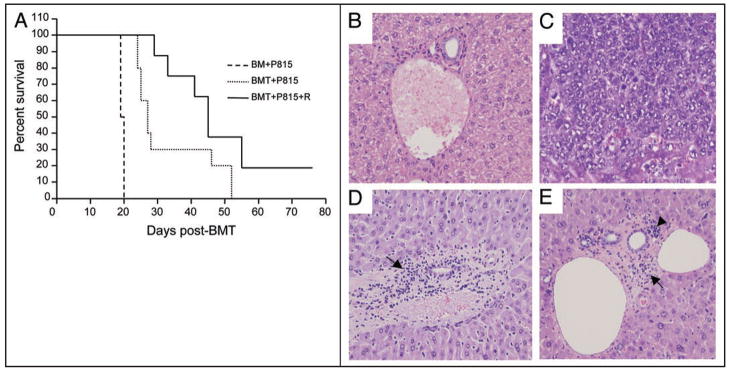Figure 6.
Roscovitine preserves anti-tumor activity induced after administration of allogeneic T cells in vivo. (A) Lethally irradiated F1 mice were infused with bone marrow alone or with T cells from parental B6 mice as described in Materials and Methods. P815 (H-2d) tumor cells were added to the BM inoculum on day 0 of transplantation. Subsequently, animals receiving allogeneic T cells were treated with either vehicle (BMT + P815) or with roscovitine (BMT + P815 + R) as described in Figure 4 (n = 8 to 10 per group). Anti-tumor activity induced after administration of allogeneic T cells is maintained during treatment with roscovitine (p = 0.009, survival of P815 recipients transplanted with bone marrow and allogeneic T cells vs. P815 recipients transplanted with bone marrow only; p = 0.002, survival of P815 recipients transplanted with bone marrow and allogeneic T cells treated with roscovitine vs. P815 recipients transplanted with bone marrow only). (B–E) Histopathology of the liver was assessed for GvHD severity and tumor infiltration (n = 5 to 9 per group). (B) Normal liver as control, (C) P815 recipients transplanted with bone marrow only, (D) P815 recipients transplanted with bone marrow and allogeneic T cells, (E) P815 recipients transplanted with bone marrow and allogeneic T cells, treated with roscovitine. Roscovitine treated animals displayed reduced inflammatory changes and lymphocyte infiltration in the portal areas (arrows), without evidence of tumor growth. Arrowhead indicates hematopoietic progenitors engrafted in the liver. Original magnification ×200.

